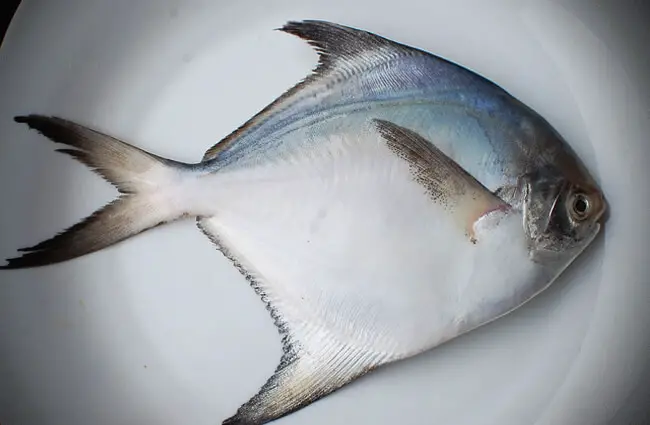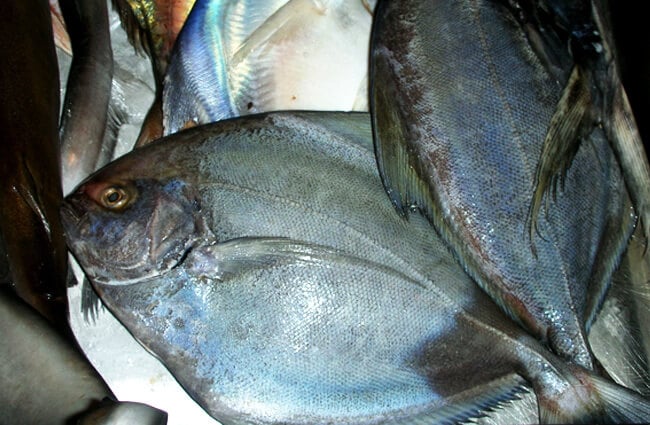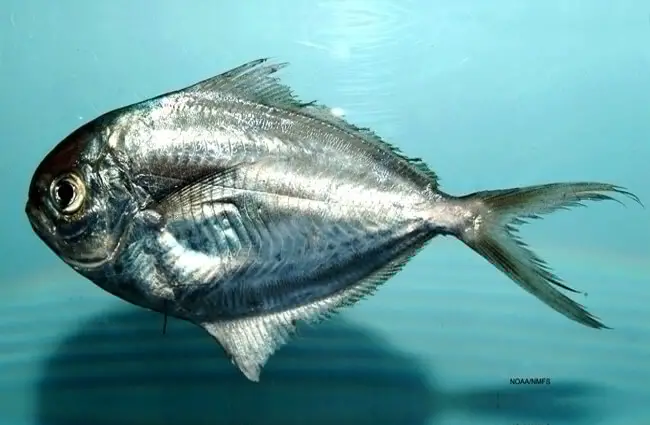The ocean’s depths hold countless wonders, and among them swims a group of fish known for their distinctive qualities, often referred to as “Butter Fish.” This intriguing moniker, while not always referring to a single species, encompasses various marine inhabitants celebrated for their smooth texture, often rich flavor, and fascinating adaptations to life beneath the waves. From bustling coastal waters to the mysterious open ocean, these fish play vital roles in their ecosystems and have captured the attention of scientists, chefs, and nature enthusiasts alike.
What Exactly is a Butter Fish?
The term “Butter Fish” is a common name applied to several distinct species across different families, primarily due to their characteristic smooth, often scaleless or finely scaled bodies, and sometimes their rich, buttery flesh. While the exact species can vary by region, prominent examples include members of the family Stromateidae, such as the American Butterfish (Peprilus triacanthus), and various species of Pomfret (family Bramidae or Carangidae, depending on the specific common name usage). These fish typically exhibit a compressed, oval to diamond-shaped body, often with a silvery sheen, allowing them to navigate efficiently through water.
Their fins are generally soft-rayed, and some species possess long, flowing dorsal and anal fins that contribute to their elegant appearance. Size can vary significantly, from smaller species measuring just a few inches to larger pomfrets that can exceed two feet in length. Despite their diverse taxonomic backgrounds, the shared characteristics that earn them the “Butter Fish” title speak to a common evolutionary path towards hydrodynamic efficiency and a diet that often contributes to their prized flesh quality.

Where Do They Call Home? Butter Fish Habitats
Butter Fish species are predominantly marine, inhabiting a wide range of oceanic environments across the globe. Their distribution is vast, reflecting the diversity within the group.
- Coastal and Shelf Waters: Many species, like the American Butterfish, prefer the relatively shallow, productive waters over continental shelves. They are often found in estuaries, bays, and nearshore environments, particularly during warmer months. These areas provide abundant food sources and shelter.
- Temperate to Tropical Zones: While some species thrive in cooler temperate waters, others are distinctly tropical, populating the warm seas of the Indo-Pacific, Atlantic, and Pacific Oceans. This broad range means that “Butter Fish” can be encountered from the coasts of North America to the shores of Asia.
- Pelagic and Benthic Associations: Depending on the species, Butter Fish can be pelagic, meaning they live in the open water column, or demersal, associating more closely with the seafloor. Some exhibit schooling behaviors in mid-water depths, while others might be found closer to the bottom, foraging for food.
- Depth Preferences: Their preferred depths can range from just a few meters in coastal areas to several hundred meters in deeper offshore regions. Factors like water temperature, food availability, and predator presence influence their vertical distribution.
Understanding their habitat preferences is key for anyone hoping to observe these fish in their natural environment, as it dictates where and when they are most likely to be found.

A Glimpse into Their Daily Lives: Diet and Behavior
The daily lives of Butter Fish are a fascinating study in marine adaptation, revolving around foraging, avoiding predators, and social interactions.
What’s on the Menu? Butter Fish Diet
Butter Fish are generally opportunistic feeders, with their diet varying based on species, age, and geographical location. However, a common theme is their reliance on smaller marine organisms.
- Zooplankton Specialists: Many species are primarily planktivores, consuming vast quantities of zooplankton, including copepods, amphipods, and larval crustaceans. This diet is often responsible for the rich, oily texture of their flesh.
- Small Invertebrates: They also feed on small invertebrates found in the water column or near the seabed, such as small jellyfish, comb jellies, and squid larvae.
- Small Fish: Larger Butter Fish species may supplement their diet with small fish, demonstrating a more predatory feeding strategy.
Their feeding habits make them important links in the marine food web, transferring energy from lower trophic levels to higher ones.
Behavior and Social Structure
Butter Fish often exhibit schooling behavior, particularly when young or during migration. These schools provide safety in numbers against predators such as larger fish, sharks, and marine mammals. Their streamlined bodies allow for rapid bursts of speed, essential for evading threats. Some species are known to associate with jellyfish, using the stinging tentacles of the jellyfish for protection while potentially feeding on its gonads or associated organisms. This symbiotic or commensal relationship highlights their clever adaptations for survival.

The Dance of Life: Reproduction and Development
The reproductive strategies of Butter Fish are typical of many marine teleosts, focusing on producing a large number of offspring to ensure species survival.
Mating and Spawning
Reproduction generally occurs through external fertilization. During spawning season, which often coincides with warmer water temperatures and increased food availability, adult Butter Fish gather in specific areas. Females release numerous small, buoyant eggs into the water column, which are then fertilized by sperm released by the males. The exact timing and location of spawning can vary significantly between species and geographical regions.
Larval and Juvenile Development
The fertilized eggs drift with ocean currents as part of the plankton, undergoing development. Upon hatching, the larval Butter Fish are tiny and vulnerable, relying on their yolk sac for initial nourishment. As they grow, they begin to feed on microscopic plankton. Larval and juvenile stages are critical periods of high mortality, but those that survive develop into miniature versions of the adults, gradually adopting the adult diet and habitat preferences. Some juvenile Butter Fish are known to shelter among the tentacles of large jellyfish, gaining protection from predators until they are large enough to fend for themselves.

Butter Fish in the Grand Tapestry of Life: Ecosystem Role
Butter Fish are integral components of marine ecosystems, contributing significantly to the balance and health of their habitats.
Contribution to the Ecosystem
As consumers of zooplankton and small invertebrates, Butter Fish play a crucial role in transferring energy from lower trophic levels to higher ones. They help control plankton populations, which in turn influences water quality and nutrient cycling. Their schooling behavior can also have localized impacts on plankton density.
Interaction with Other Animals
Butter Fish serve as a vital food source for a wide array of marine predators. Larger fish, such as tuna, mackerel, and various sharks, actively hunt Butter Fish schools. Marine mammals, including dolphins and seals, also prey on them. Seabirds, particularly diving species, will target Butter Fish when they are near the surface. The unique association some juvenile Butter Fish have with jellyfish demonstrates a fascinating interspecies interaction, where the fish gain protection from predators by living among the jellyfish’s stinging tentacles, potentially even feeding on parasites or small organisms associated with the jellyfish.

Evolutionary Journey: A Glimpse into Their Past
The various species known as “Butter Fish” belong to different evolutionary lineages within the vast group of ray-finned fishes, or Actinopterygii. Their evolutionary history reflects a long process of adaptation to diverse marine environments.
For instance, the Stromateidae family, which includes the American Butterfish, is part of the order Scombriformes, a group that also includes tunas and mackerels. This lineage suggests an evolutionary path towards fast-swimming, pelagic lifestyles. Their compressed bodies and small, often deciduous scales are adaptations for efficient movement through water, minimizing drag. The development of their unique association with jellyfish in juvenile stages is a remarkable evolutionary innovation, providing a survival advantage in predator-rich environments.
Other “Butter Fish” like the Pomfrets (Bramidae) belong to a different order, Carangiformes, which includes jacks and trevallies. These fish have also evolved streamlined bodies and powerful caudal fins for swift movement. Their presence in both temperate and tropical waters, and across various depths, indicates a high degree of evolutionary plasticity and successful diversification over millions of years, allowing them to exploit different ecological niches.
Studying the fossil record and genetic relationships among these groups helps scientists piece together their ancient origins, tracing back to common ancestors that navigated the primordial oceans, gradually evolving the distinct features we observe in today’s Butter Fish.
Butter Fish and Humanity: A Complex Relationship
The interaction between Butter Fish and humans is multifaceted, encompassing culinary appreciation, commercial fishing, and conservation challenges.
Contribution to Human Culture and Cuisine
Butter Fish are highly prized in many cultures for their delicate flavor and tender, often oily flesh. They are a staple in seafood markets around the world, particularly in Asian cuisine where species like Pomfrets are considered a delicacy. Their versatility in cooking, from grilling and frying to steaming and curries, makes them a popular choice for chefs and home cooks alike. This culinary demand has deeply embedded Butter Fish into the cultural fabric of many coastal communities, influencing local economies and traditions.
Commercial Fishing and Interaction with Humans
Commercial fisheries target various Butter Fish species using methods such as trawling, gillnetting, and purse seining. These fisheries provide livelihoods for countless individuals and contribute significantly to global food security. However, the efficiency of modern fishing techniques can lead to concerns about overfishing and bycatch, where non-target species are inadvertently caught. Sustainable fishing practices, including quotas, gear restrictions, and marine protected areas, are crucial for managing Butter Fish populations and ensuring their long-term viability.
Conservation Status
The conservation status of “Butter Fish” varies widely depending on the specific species and region. While some populations remain robust, others face threats from habitat degradation, climate change, and unsustainable fishing pressure. Monitoring population trends, conducting scientific research, and implementing effective management strategies are essential steps in protecting these valuable marine resources for future generations. Consumers can contribute by choosing sustainably sourced Butter Fish products.
Encountering Butter Fish: Tips for Enthusiasts and Zookeepers
Whether you are a curious observer, an aspiring marine biologist, or a dedicated animal caretaker, understanding Butter Fish can enrich your experience.
For the Wild Observer or Animal Lover
If you are an animal lover aiming to find Butter Fish in the wild, particularly coastal species like the American Butterfish or certain Pomfrets, consider these tips:
- Location: Focus on temperate and tropical coastal waters, estuaries, and continental shelf areas. Check local fishing reports or ask local fishermen about their presence.
- Timing: Many species are more active during warmer months. Early morning or late afternoon can be good times for observation.
- Observation Methods:
- Snorkeling/Diving: In clear coastal waters, you might spot schools of Butter Fish in mid-water or near structures.
- Boat Trips: Look for signs of schooling fish near the surface, often indicated by diving seabirds.
- Coastal Walks: While less likely to see them directly, observing local fishing activities can give you an idea of their presence.
- What to Do if You Encounter One: Observe from a respectful distance. Do not attempt to touch or disturb the fish. If you are a hiker near a coastal area and find a stranded fish, contact local wildlife authorities or a marine rescue organization. Do not attempt to return it to the water unless you are trained and it is safe to do so.
For the Aspiring Zoologist
To learn more about Butter Fish, aspiring zoologists should:
- Study Ichthyology: Focus on fish biology, ecology, and taxonomy.
- Volunteer/Intern: Seek opportunities at aquariums, marine research labs, or fisheries management agencies.
- Research: Delve into scientific literature on Stromateidae, Bramidae, and related families. Understand their life cycles, population dynamics, and conservation challenges.
- Fieldwork: Participate in marine surveys, fish tagging programs, or ecological studies to gain hands-on experience.
For the Zookeeper Caring for a Butter Fish in Captivity
Caring for Butter Fish in a captive environment requires specialized knowledge and diligent attention to their specific needs:
- Habitat Design:
- Tank Size: Provide ample space, especially for schooling species, to allow for natural swimming patterns. A large, open tank is often preferred.
- Water Quality: Maintain pristine marine water parameters, including stable temperature, salinity, pH, and dissolved oxygen levels. Regular testing and filtration are paramount.
- Substrate/Decor: For pelagic species, a bare or fine sand substrate is acceptable. Avoid sharp decorations that could injure their delicate bodies.
- Diet:
- Variety is Key: Offer a varied diet of high-quality marine pellets, frozen mysis shrimp, brine shrimp, krill, and finely chopped seafood.
- Feeding Frequency: Feed small amounts multiple times a day to mimic natural foraging behavior and prevent water fouling.
- Social Needs:
- Schooling: Many Butter Fish species thrive in groups. Consider keeping multiple individuals to reduce stress and encourage natural behaviors.
- Tank Mates: Choose peaceful tank mates of similar size that will not harass or outcompete the Butter Fish for food. Avoid aggressive or fin-nipping species.
- Health Monitoring:
- Observation: Regularly observe their swimming patterns, appetite, and appearance for any signs of disease or stress.
- Quarantine: Always quarantine new arrivals to prevent the introduction of pathogens.
- What to Avoid:
- Overcrowding: Leads to stress, aggression, and poor water quality.
- Rapid Water Changes: Can cause osmotic shock. Make changes gradually.
- Incompatible Tank Mates: Can result in injury, stress, or starvation.
- Poor Diet: Leads to nutritional deficiencies and weakened immune systems.
- Sudden Movements/Loud Noises: Can startle and stress the fish.
Fascinating Facts About Butter Fish
- Some juvenile Butter Fish species are known to live among the stinging tentacles of large jellyfish, gaining protection from predators.
- The American Butterfish (Peprilus triacanthus) can change its body coloration to blend with its surroundings, a form of camouflage.
- Many species are highly migratory, undertaking long journeys between spawning and feeding grounds.
- Their smooth, often scaleless or finely scaled skin is a key characteristic contributing to their common name.
- Butter Fish are an important part of the diet for many commercially important fish, making them a crucial link in the marine food web.
- In some cultures, Butter Fish are considered a delicacy and are highly sought after for their rich, tender flesh.
- The term “Butter Fish” can refer to species from at least three different fish families, highlighting the diversity within this common name.
- Some species exhibit sexual dimorphism, with males and females displaying subtle differences in size or coloration.
- Their diet of zooplankton often contributes to the high omega-3 fatty acid content in their flesh.
Conclusion
The world of “Butter Fish” is a testament to the incredible diversity and adaptability of marine life. From their sleek forms gliding through ocean currents to their vital roles in complex food webs, these fish offer a wealth of knowledge for anyone curious about the natural world. Their interactions with humans, spanning from culinary delight to conservation challenges, underscore our shared responsibility to protect these remarkable creatures and the delicate ecosystems they inhabit. By appreciating their unique biology and understanding their place in the grand scheme of marine life, we can ensure that the fascinating story of the Butter Fish continues to be told for generations to come.

![Red Angus Closeup of a beautiful Red Angus cowPhoto by: U.S. Department of Agriculture [pubic domain]https://creativecommons.org/licenses/by/2.0/](https://animals.net/wp-content/uploads/2020/03/Red-Angus-4-238x178.jpg)




![Red Angus Closeup of a beautiful Red Angus cowPhoto by: U.S. Department of Agriculture [pubic domain]https://creativecommons.org/licenses/by/2.0/](https://animals.net/wp-content/uploads/2020/03/Red-Angus-4-100x75.jpg)

